A keto diet for beginners
This guide is based on scientific evidence, following our policy for evidence-based guides. Click for more info.
- What is keto?
- Foods to eat
- Foods to avoid
- Keto macros
- Printable leaflet
A ketogenic diet – or keto diet – is a low carb, high fat diet. It can be effective for weight loss and certain health conditions, something that’s been demonstrated in many studies. 1
A keto diet is especially useful for losing excess body fat without hunger, and for improving type 2 diabetes or metabolic syndrome. 2
On a keto diet, you cut way back on carbohydrates, also known as carbs, in order to burn fat for fuel.
In this beginner’s guide, you’ll learn all you need to know about ketogenic diets, including how to get started to achieve the best results safely and effectively.

DD+ MEMBERSHIP
Get your personalized meal plan with a FREE 30-day trial!
What's your gender?
Learn more about keto and…
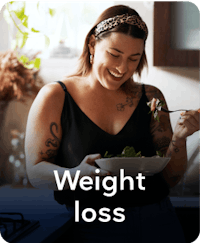
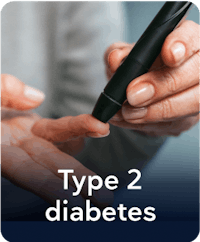
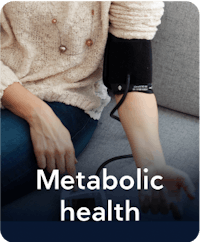
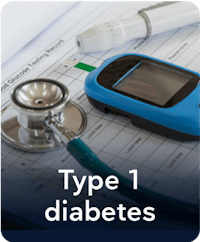
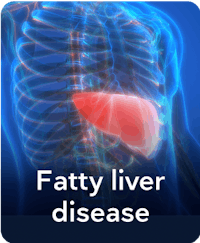
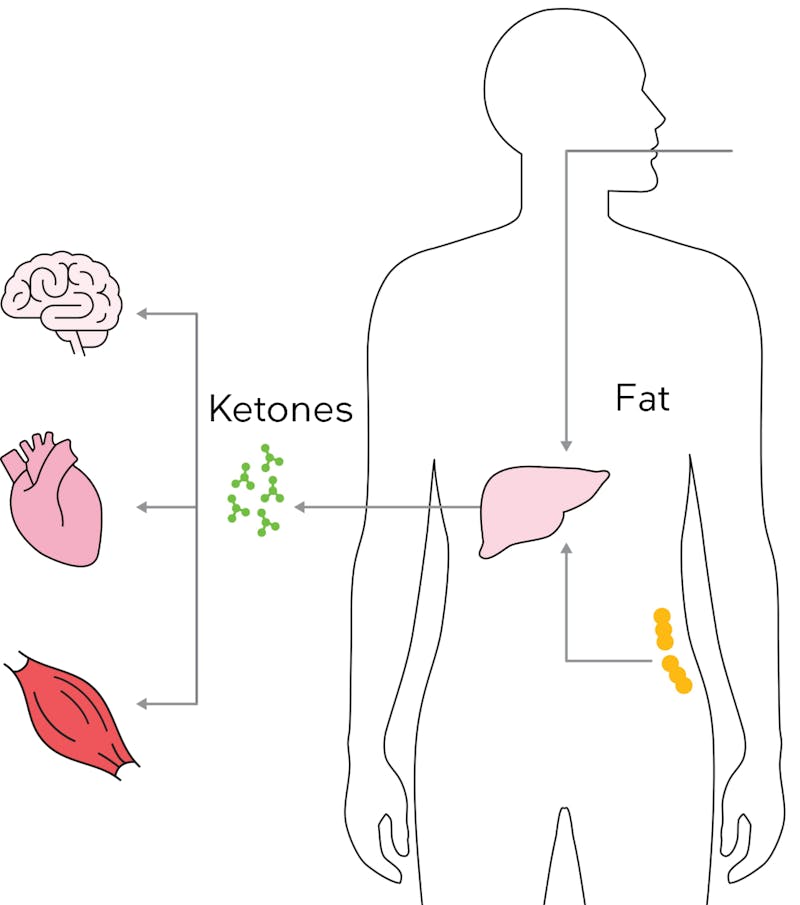
In ketosis, your liver uses fat (from your body and diet) to create ketones that your brain can use for energy. Fat also fuels your muscles. Read more
1. What is a keto diet?
A keto diet is one that limits carbs and has many potential health benefits.
When you eat far fewer carbs, your body begins to burn fat for fuel. This can put your body into a metabolic state called ketosis. In this state, your liver turns fat into small energy molecules called ketones, which your brain and other organs can use for energy.
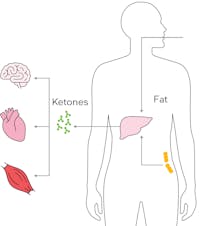
Eating a keto diet lowers insulin levels, often dramatically, and naturally reduces calorie intake, which can help you access your body fat stores for energy. 3 Many studies show significant weight loss on keto, without having to count calories. 4 Keto diets may have other positive health effects, such as reducing blood sugar levels.
In ketosis, your liver uses fat (from your body and diet) to create ketones that your brain can use for energy. Fat also fuels your muscles. Read more
Eating a keto diet lowers insulin levels, often dramatically, which can help you access your body fat stores for energy. 5 Many studies show significant weight loss on keto, without having to count calories. 6 Keto diets may have other positive health effects, such as reducing blood sugar levels.
Learn more about ketosis
Summary
The keto diet is a low carb, high fat diet. It can help the body burn more fat, reduce hunger, and reduce blood sugar levels.
In this guide, you’ll learn how to eat a keto diet. Our visual guides, recipes, meal plans, and simple two-week Get Started program are everything you need to succeed on keto.

The keto video course
You can quickly learn more about the keto diet in this video course.

Precautions before starting a keto diet
There are controversies and myths about a keto diet, but for most people, it appears to be very safe. However, two groups often require medical supervision:
- Do you take medication for high blood pressure?More >
- Do you take medication for diabetes, such as insulin? More >
Some people should avoid keto altogether:
For more details about the pros and cons in different situations, check out our full guide: Is a keto diet right for you?
Disclaimer: While the ketogenic diet has many proven benefits, it’s still controversial. The main potential danger regards medications, e.g. for diabetes, where doses may need to be adapted (see above). Discuss any changes in medication and relevant lifestyle changes with your doctor. Full disclaimer >
This guide is written for adults with health issues, including obesity, that could benefit from a ketogenic diet.
DD+ MEMBERSHIP
Start your FREE 30-day trial!
Get instant access to healthy low carb and keto meal plans, fast and easy recipes, weight loss advice from medical experts, and so much more. A healthier life starts now with your free trial!
2. What to eat on a keto diet?
Here are typical foods to enjoy on a ketogenic diet. The numbers are net carbs per 100 grams (3.5 ounces) of food.
To remain in ketosis, foods with lower counts are generally better:
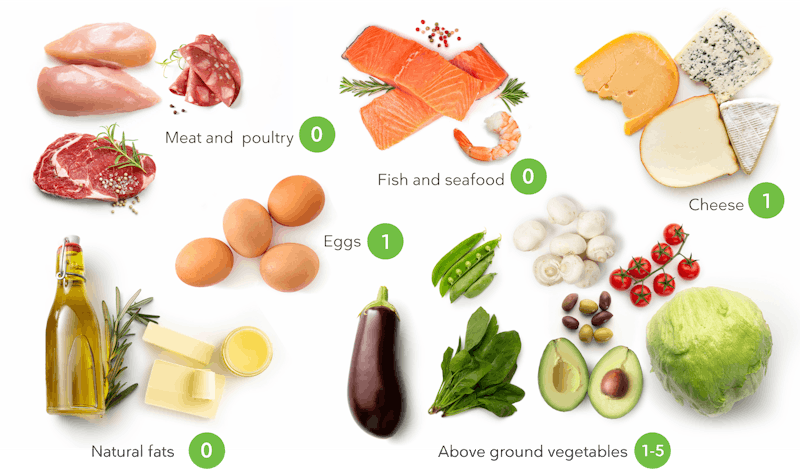
What’s the most important thing to do to reach ketosis? Avoid eating too many carbs. You’ll likely need to stay under 50 grams of net carbs (total carbs minus fiber) per day, ideally below 20 grams.
The fewer carbs you eat, the more effective the diet appears to be for reaching ketosis, losing weight, or improving type 2 diabetes.
Counting carbs can be helpful at first. But if you stick to our recommended foods and recipes you can stay keto even without counting.
Carbs list
- Red meat, such as beef, pork and lamb: 0 grams
- Poultry, such as chicken and turkey: 0 grams
- Fish of all types, including salmon, tuna, sole, trout, and halibut: 0 grams
- Natural fats, such as butter and olive oil: 0 grams
- Cheese: 1 gram
- Eggs: 1 gram
- Above-ground vegetables, including leafy greens, broccoli, cauliflower, tomatoes, and eggplant: 1 to 5 grams
Visual guides
For more on specific topics – like what fruits or nuts to eat on a ketogenic diet – check out our popular visual guides:
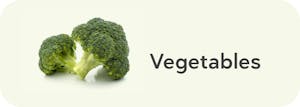
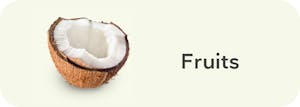
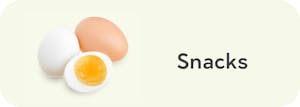
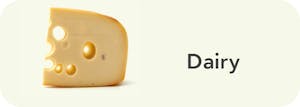
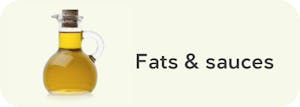
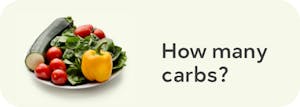
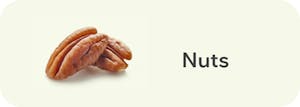
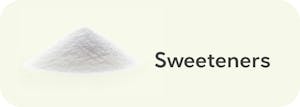
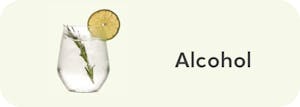

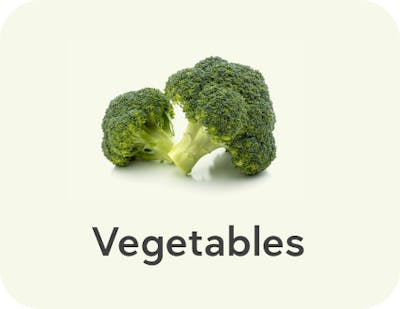
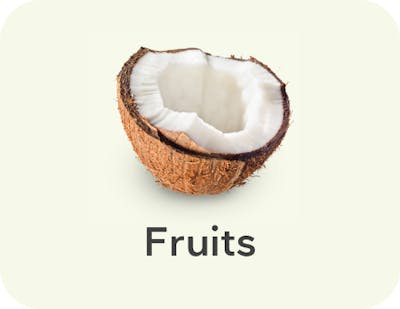

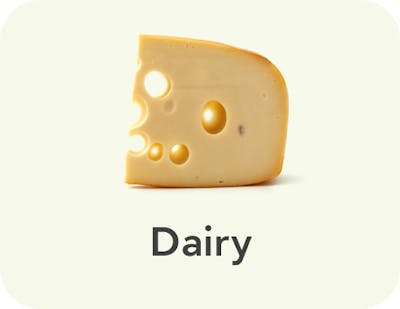
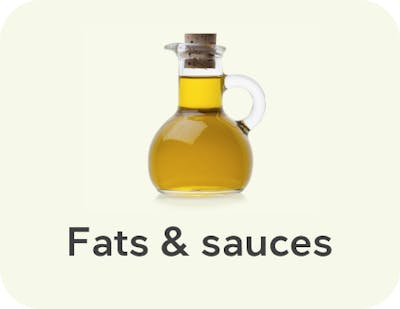
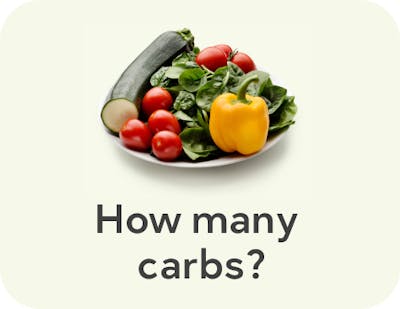
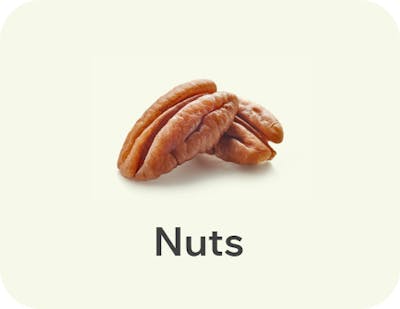
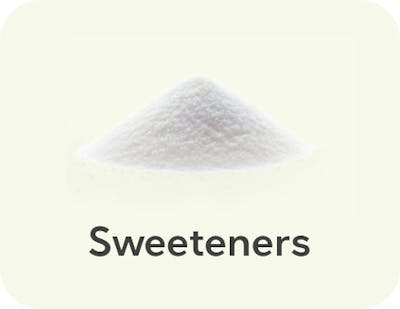
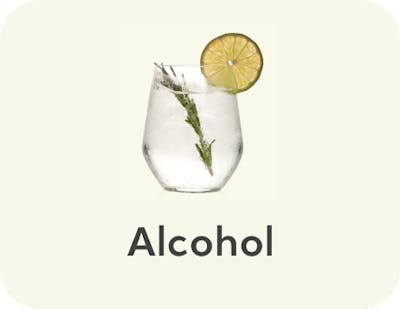

Planning keto
With the right strategy, creating keto meals is easy.
One way is to start by picking a protein source, such as meat, fish, seafood, eggs, or tofu. Then, to complete your meal, choose two low carb vegetables and add a healthy source of fat.
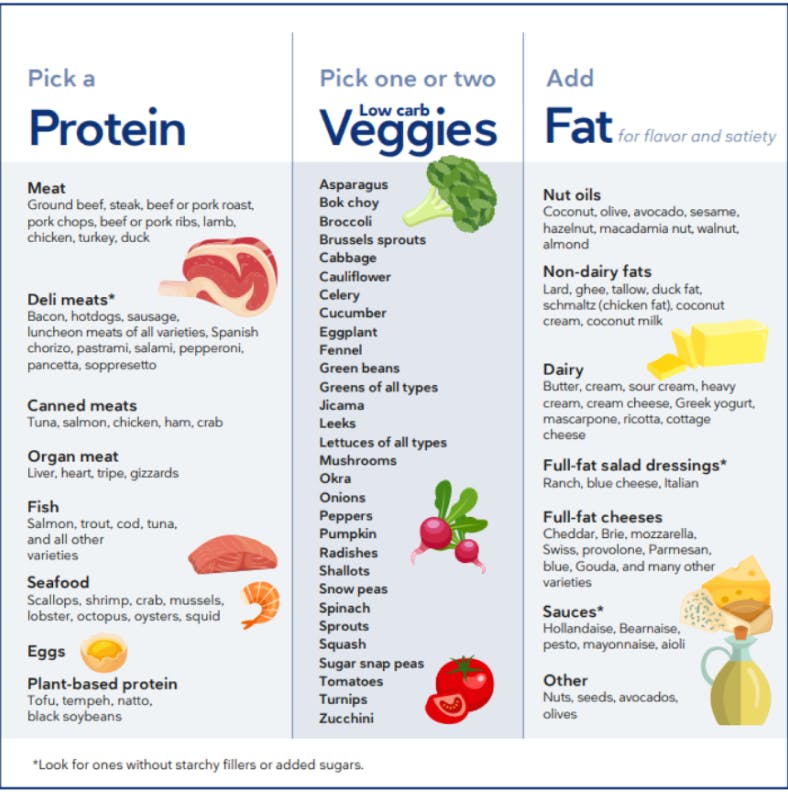
What to drink
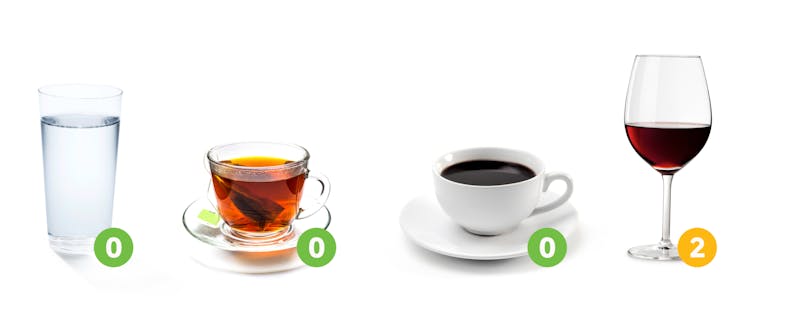
What can you drink on a ketogenic diet? Water is the perfect drink, and coffee or tea are fine too. Ideally, use no sweeteners, especially sugar.
A splash of milk or cream in your coffee or tea is OK, but beware that the carbs can add up if you drink multiple cups in a day (and definitely avoid caffe lattes!). The occasional glass of wine is fine, too — but steer clear of sweet alcoholic drinks.
Carb counts per glass or cup of beverage
- Water: 0 grams
- Coffee and tea: 0 grams
- Dry red or white wine: 2 grams per 5 ounces/150 ml
Check out our full guides to keto drinks and keto alcohol.
Try to avoid
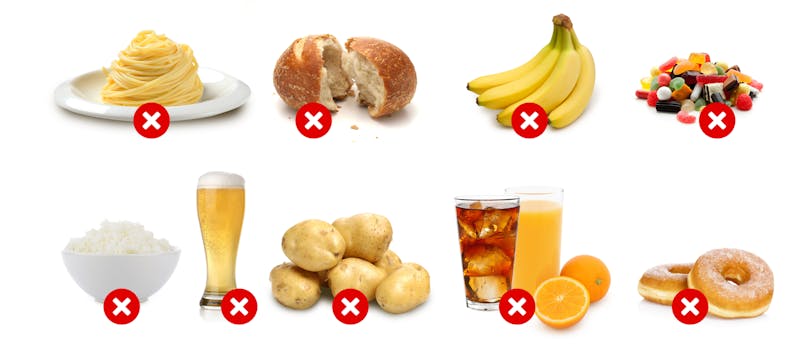
Here’s what you should avoid on a keto diet – foods containing a lot of carbs, both the sugary and the starchy kind.
Foods to stay away from include:
- Bread, tortillas, muffins, bagels, pancakes
- Pasta and rice
- Cereal
- Cakes, cookies, and other baked goods
- Sugar and anything made with sugar
- Most fruits and fruit juice 7
Also, avoid or limit highly processed foods and instead fill your diet with our recommended keto-friendly food options.
Summary
Base your keto meals on meat, poultry, fish, eggs and other protein-rich foods. Include lots of leafy greens, non-starchy veggies, and salads. Use fats like olive oil for flavor and to fill in calories, if needed. Avoid sugary and starchy foods. Drink water, tea, or coffee.
DD+ MEMBERSHIP
200+ meal plans designed for results
With our low carb and keto meal plans, we do the planning for you. All you have to focus on is cooking, eating, and enjoying healthy, delicious food.

Related content
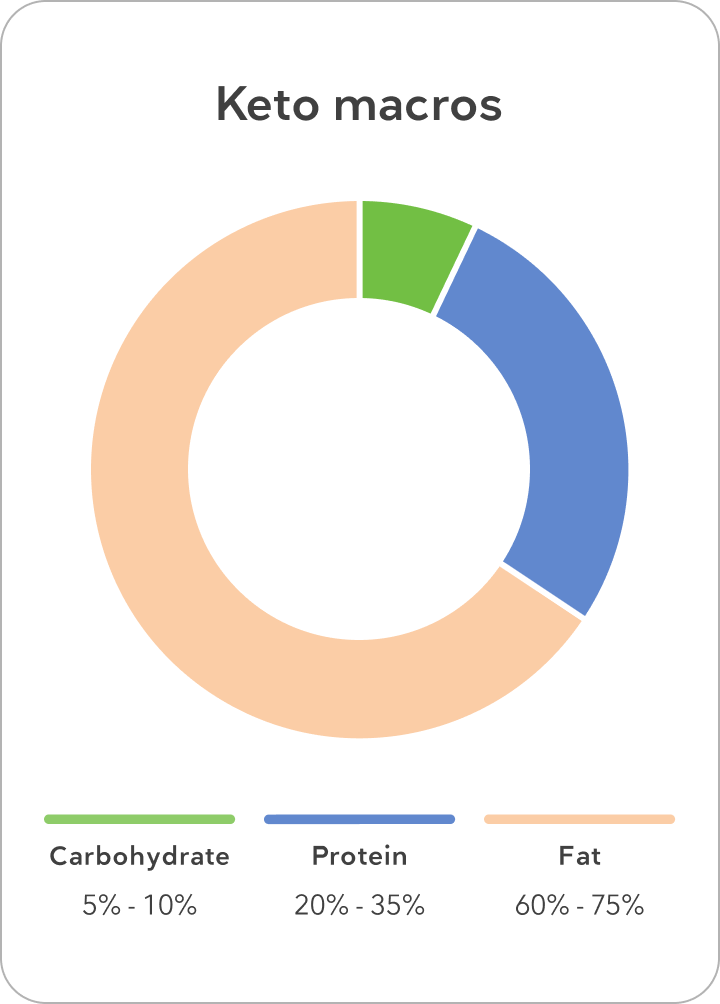

Keto macros: Carbs, protein, & fat
When following a keto diet, the idea is to eat very few carbs, a moderate amount of protein, and just as much fat as you need to feel satisfied, rather than stuffed.
Carbohydrates
Limit carbs to 20 or fewer grams of net carbs per day, or 5 to 10% of calories. Although it’s possible that you may not need to be this strict, eating fewer than 20 grams of net carbs every day virtually guarantees that you’ll be in nutritional ketosis. Learn more >
Protein
Eat enough protein to meet your needs. Most people need at least 70 grams per day, or 20 to 35% of calories from protein. Learn more >
Fat
Include enough fat to add flavor. There’s no reason to add lots of fat unless you need extra calories. Plus, many whole foods like eggs and meat contain plenty of fat. On a keto diet, about 60 to 75% of your calories come from fat. Learn more >
Related content
Keto diet recipes


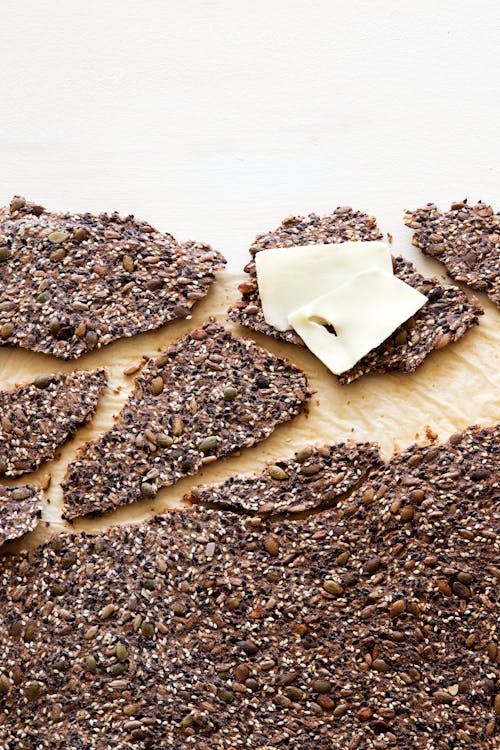
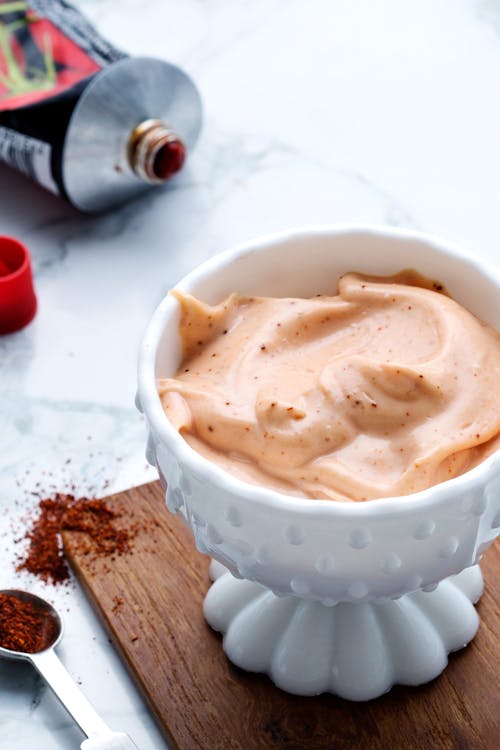




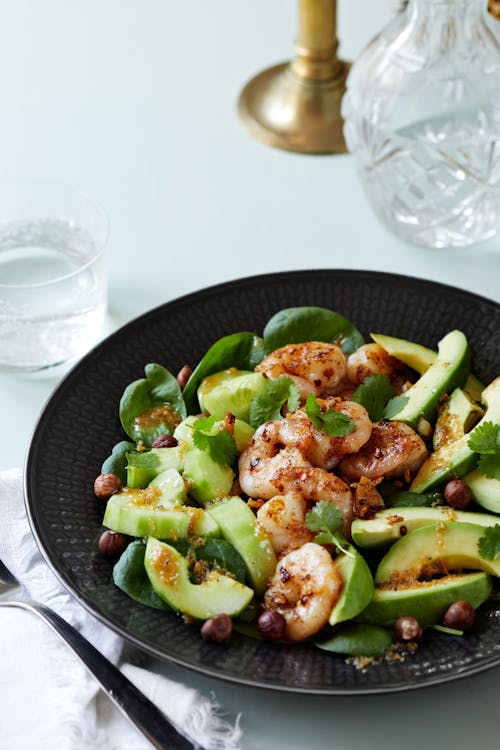


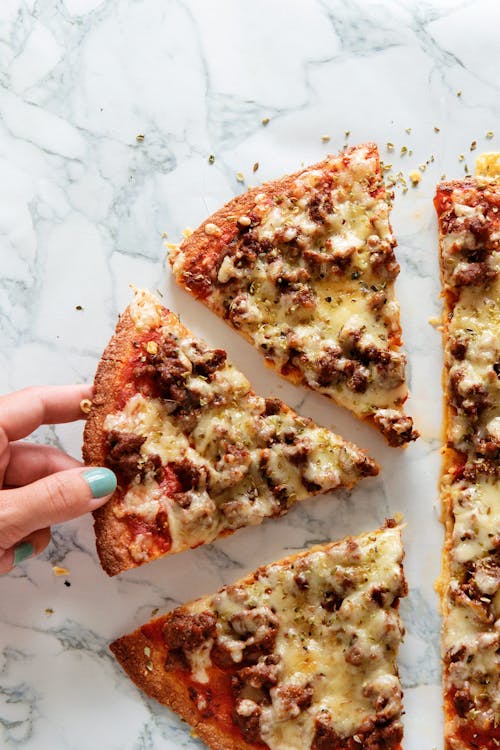



3. Keto results —
how can it benefit you?
- Weight loss
- Type 2 diabetes
- Metabolic health
- Type 1 diabetes
- Fatty liver disease
If you are wondering what kind of results you can expect from a keto diet, the answer depends on how strict you are, along with a number of other factors.
Evidence shows that keto diets help with weight loss, blood sugar control, and many other conditions. 8 But outcomes from even the most well-run study are still an average of what each participant experienced.
That means that your experience with keto will be unique. Your weight loss and health improvements may be sudden and dramatic or they may be slow but steady.
What you can expect from keto, almost without exception, is to eat foods you enjoy, without hunger or calorie-counting. If your diet is easy, enjoyable, and provides adequate essential nutrition, you’ll more likely be able to follow it long term to lose weight, improve your health, and maintain these benefits.
What benefits might you experience by switching to a keto diet? Quite a few, possibly.
It works!
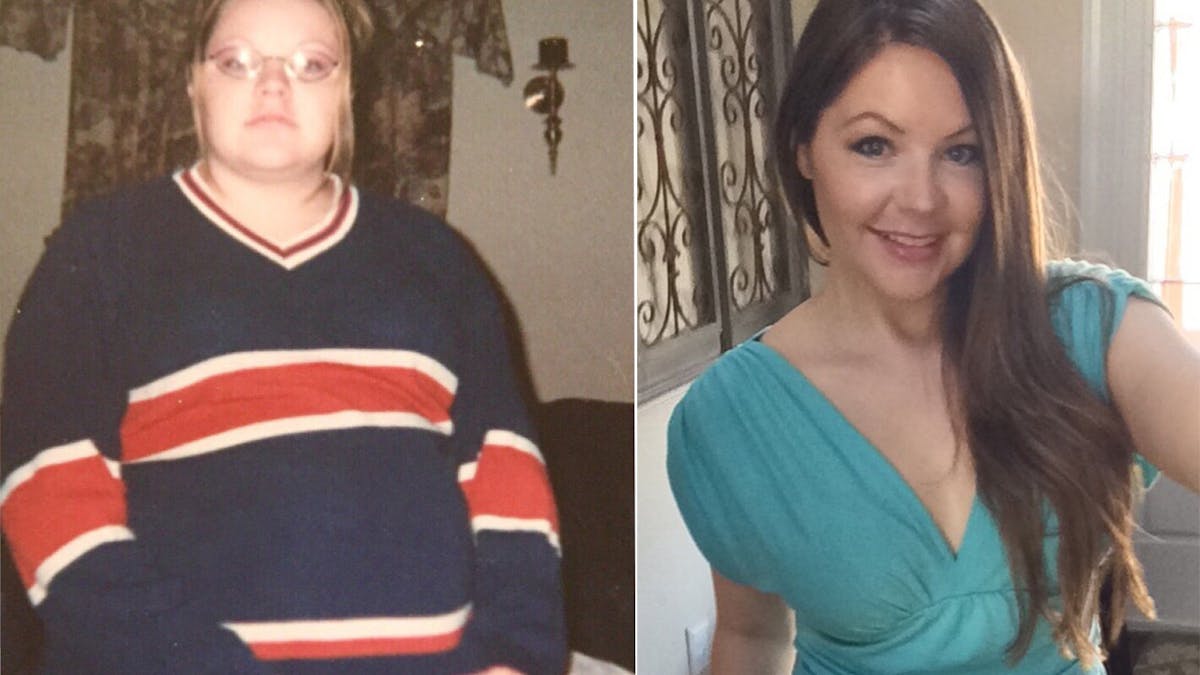
How Melissa lost 100 pounds with a keto diet, and kept it off for 15 years

Weight loss without hunger
Science shows keto and low carb diets are often effective for losing weight. 9
In fact, more than 35 high-quality scientific studies show that, when compared to other diets, low carb and keto diets lead to greater weight loss.
Why do keto diets work so well for losing weight? As discussed earlier, being in ketosis lowers insulin levels, which can help you access your body fat stores more easily. 10
Another reason may be that keto diets help people naturally eat less, as a result of feeling more satisfied. 11
It’s possible that following a low carb diet might help you burn more calories — although this hasn’t been widely studied. 12
Also, very low carb diets may potentially have a weight loss edge over diets with more modest carb reduction. 13
More than 300 people have shared their stories of losing weight — and achieving other health improvements — by following a keto lifestyle.
Check out our full guides to learn more about keto and weight loss:
- How to lose weight
- Why low carb can help you lose weight
- How to lose weight with a low carb diet
- Top 10 weight-loss tips for women 40+
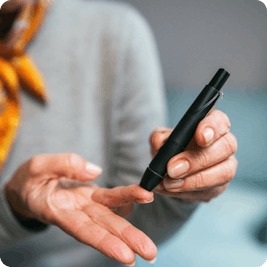
Control or reverse type 2 diabetes 14
Keto and low carb diets can provide powerful blood sugar control for people with type 2 diabetes. 15 Why? Because carbohydrates raise blood sugar much more than either protein or fat. 16 To lower blood sugar — and potentially reverse type 2 diabetes — eat fewer carbs. It can be that simple.
In an encouraging move in the right direction, the American Diabetes Association recently acknowledged this. 17
In fact, keto and low carb diets can reduce blood sugar so much that insulin and other diabetes medications often need to be reduced — or, in some cases, discontinued altogether. 18
You can read more than 200 success stories about people who improved or reversed their type 2 diabetes with keto.
Also, check out our complete guide to reversing type 2 diabetes.
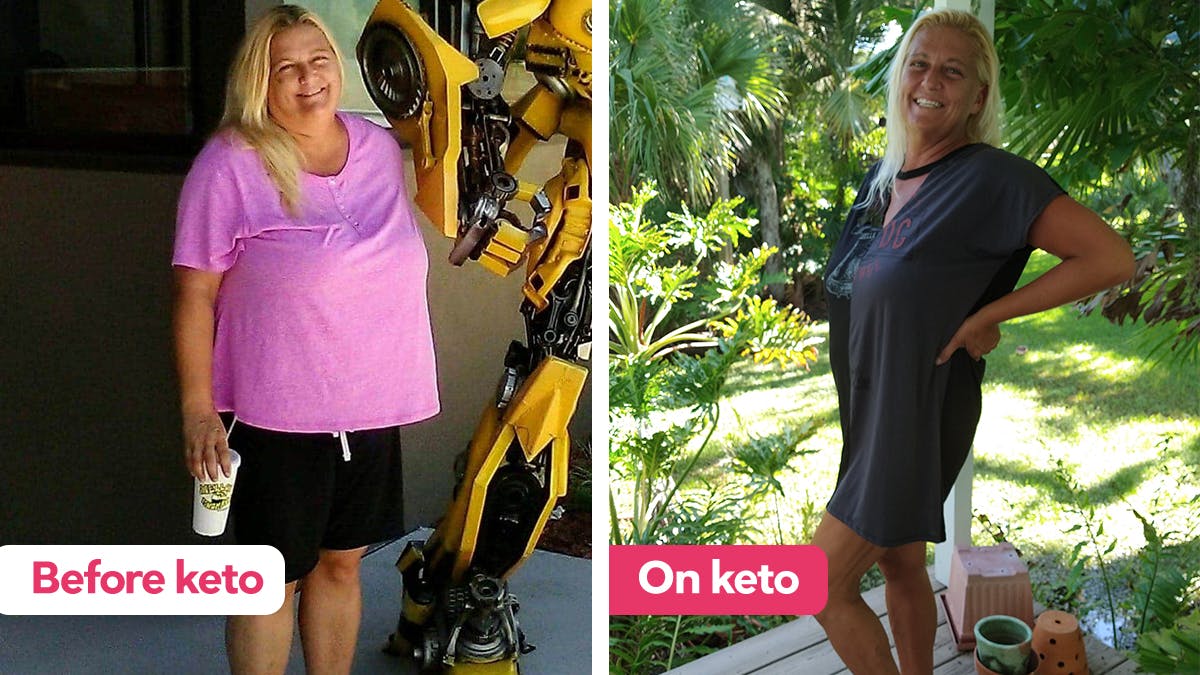
How Annette reversed her pre-diabetes and high blood pressure
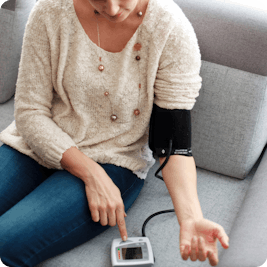
Improve metabolic
health & blood pressure
Ketogenic diets may play a strong role in improving several markers of metabolic health, including blood pressure, blood sugar, HDL cholesterol, and triglyceride levels. 19 20
In studies, when people with metabolic syndrome — also known as insulin resistance syndrome — follow a keto diet, they typically lose weight and many of their health markers improve — often significantly. 21
Learn more about insulin resistance in our guides:
- What you need to know about insulin resistance
- How to treat insulin resistance
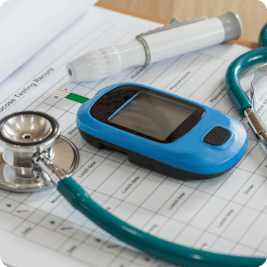
Control type 1 diabetes
People with type 1 diabetes need to take insulin injections no matter what type of diet they eat. However, low carb diets often improve blood sugar control and reduce the risk of hypoglycemia (dangerously low-blood sugar). 22
Plus, a keto or very low carb approach (less than 30 grams per day) will require the least amount of insulin and increase the likelihood of remaining within a healthy blood sugar range throughout the day and night.
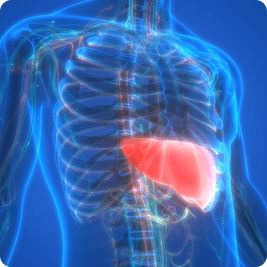
Improve fatty liver disease
In non-alcoholic fatty liver disease (NAFLD), too much fat is stored in the liver. Recent research suggests a keto or low carb diet may help reduce or even reverse NAFLD.
What causes NAFLD? Excess fat can build up in the liver for a number of reasons, including eating more calories than needed. 23
Consuming a lot of refined carbs or sugar can be especially problematic. 24 And although the exact mechanism isn’t completely understood, insulin resistance and high insulin levels are known to drive excessive storage of liver fat. 25
Fortunately, eating a low carb or keto diet may help reduce liver fat, improve insulin resistance, and potentially even reverse NAFLD. 26
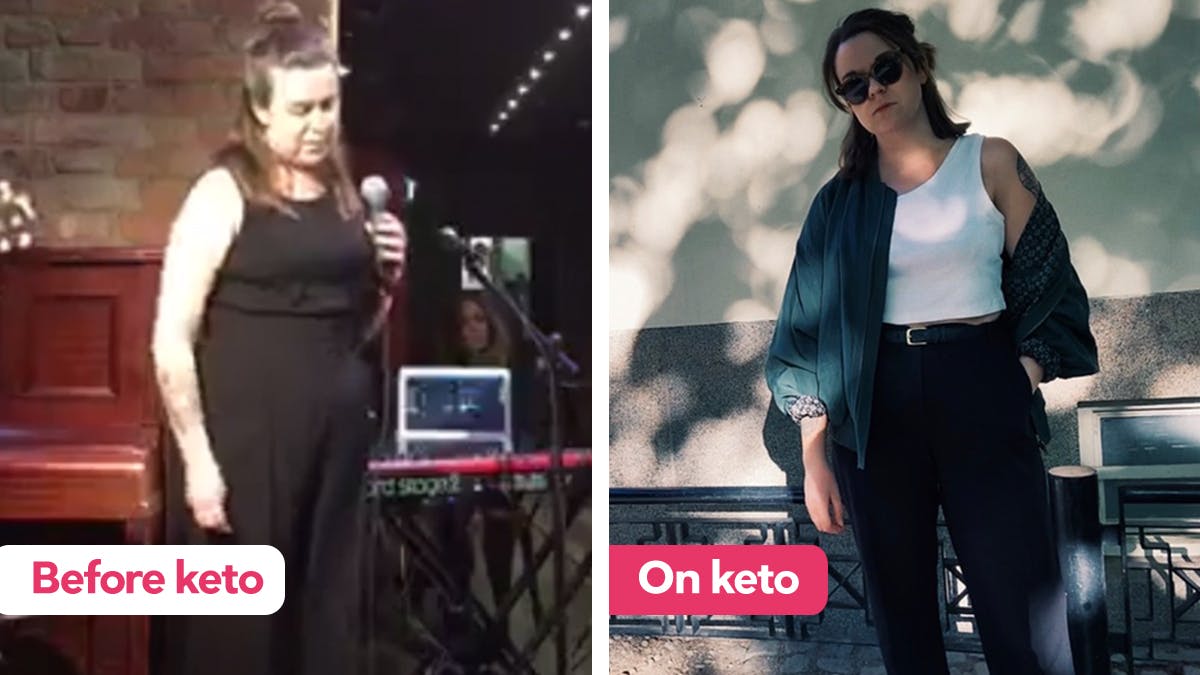
How Johanna lost 22 pounds and greatly reduced her PCOS symptoms.
Other potential benefits
Although there’s less high-quality research about the benefits of a keto diet for other conditions, emerging evidence suggests that it might be helpful for some people — and for many, it’s certainly worth trying.
- Polycystic ovary syndrome (PCOS)
- Irritable bowel syndrome (IBS)
- Acne
- Epilepsy
- Mental health
- Physical endurance
- Migraines
Summary
A keto diet has been shown to provide several benefits, such as weight loss, reversal of type 2 diabetes, and improved metabolic health.
DD+ MEMBERSHIP
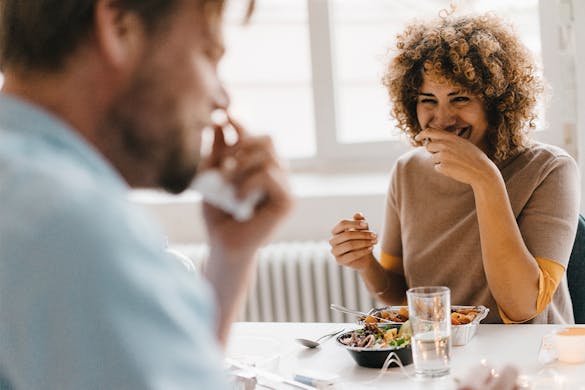
Get your personalized meal plan with a FREE 30-day trial!
What's your main health goal?
4. Potential risks of a keto diet
Does eating a keto diet pose any health risks? Although research on long-term health effects is needed, the evidence to date suggests that keto diets providing adequate nutrition are unlikely to cause harm. 27
It is true that some people following ketogenic diets have experienced adverse effects, including kidney stones and vitamin and mineral deficiencies. 28
However, these side effects are rare and we suspect they may vary with the variety of foods eaten.
In some cases, elevations in LDL-cholesterol and LDL-particle number have occurred in people who eat keto or low carb diets with less fat and more protein than the classic ketogenic diet. 29
However, individuals with diabetes or insulin resistance often respond to low carb eating with improved lipid markers overall, as discussed earlier.
If your LDL increases after starting a keto or low carb diet, please read our guides on LDL hyper-responders, the potential dangers of LDL cholesterol, and how to lower LDL cholesterol.

5. How to get into ketosis
Ketosis is a metabolic state in which your body uses fat and ketones rather than glucose (sugar) as its main fuel source.
How can you get into ketosis quickly and stay there? Here are three things to know:
- Eat less than 20 grams of net carbs per day. Cutting way back on carbs can help you get into ketosis rapidly, often within a few days.
- Avoid eating too often. If you’re not hungry, don’t eat. Intermittent fasting or even just eliminating snacks can help you get into ketosis faster.
- Measure ketones. Testing for ketones in your blood, breath, or urine can confirm that you are indeed in ketosis. Each of these methods comes with pros and cons. For a detailed comparison, see our full guide to the best way to test ketones.
6. Common mistakes
The “perfect” approach to keto will likely differ from person to person. But to help you get ahead of the game, here are some common mistakes to avoid to achieve keto success.
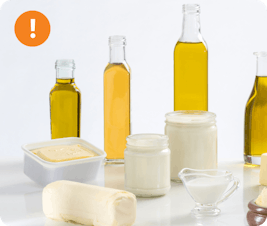
Going overboard with fat
Have you heard that fat is a free food on a keto diet, or that if you want to lose fat, you should eat more fat? The truth is that eating too much fat prevents your body from using its stored fat for energy. So, go easy on fat if you’re trying to lose weight. Learn more >
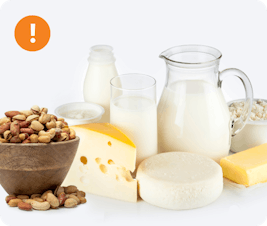
Eating too many nuts and dairy products
Most nuts and some dairy products (cheese and Greek yogurt) are keto-friendly. However, their carbs and calories can add up fast if you eat too much — and these tasty foods are easy to overdo. For best results, keep portion sizes small. Learn more >
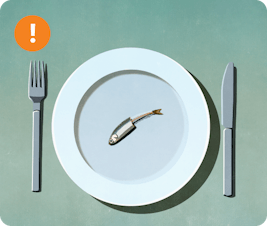
Fear of too much protein
Are you concerned that eating a lot of meat, eggs, and other high protein foods will lead to gluconeogenesis (literally “making new glucose”) and raise your blood sugar? You don’t need to be. Studies in people with type 2 diabetes suggest that protein usually has little to no effect on blood sugar levels. 30 Learn More >
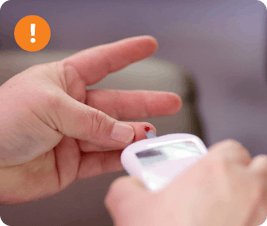
Chasing higher ketone levels
Being in nutritional ketosis means that your blood ketone levels are between 0.5 and 3.0 mmol/L. However, higher levels don’t appear to be any better than lower levels for weight loss. In fact, you don’t necessarily need to be in ketosis to lose weight. Learn more >

7. Intermittent fasting & keto
Some people on a keto diet choose to also practice intermittent fasting to speed up weight loss or when trying to reverse type 2 diabetes.
Intermittent fasting involves cycling between periods of fasting and eating. When eating a keto diet, many people feel hungry less often. And since we advise eating only when you are hungry, this means that you might naturally begin to eat fewer meals a day — or you may deliberately plan fewer meals to match your reduced appetite. For some people, this could mean eating two meals a day (often skipping breakfast). For others, this could mean eating once a day, which is often referred to as OMAD, meaning “one meal a day.”
Want to learn more about the potential benefits of intermittent fasting — or need information on how to get started? Read our full guide to intermittent fasting.
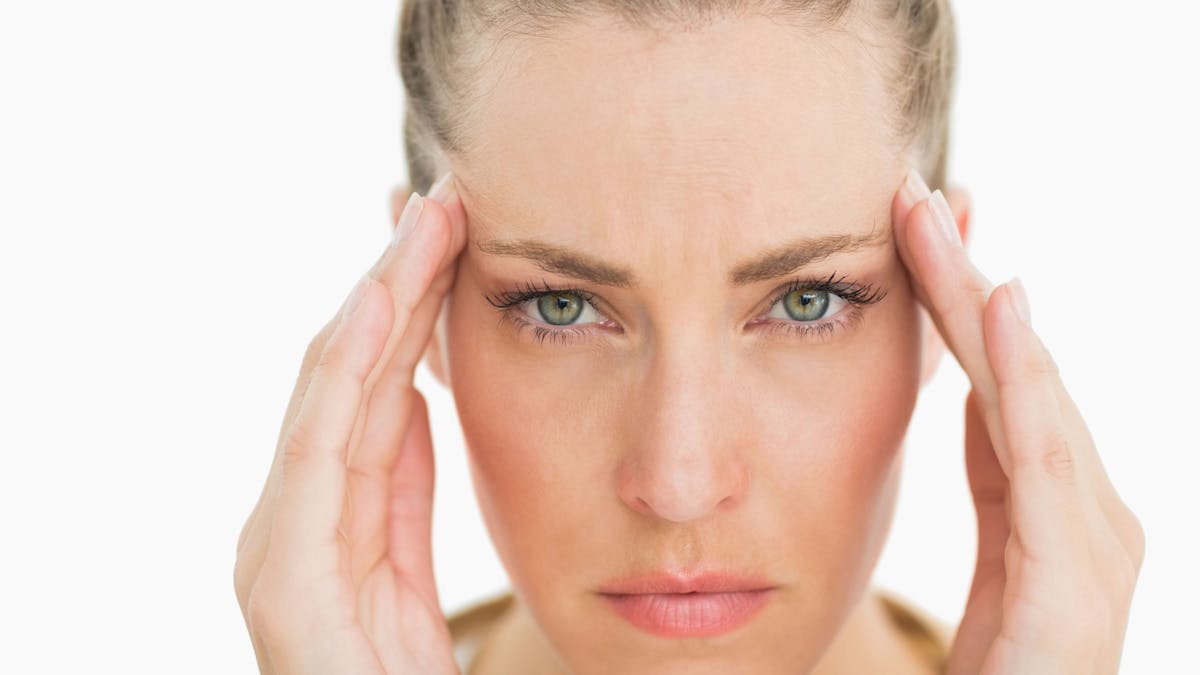
The keto flu, other keto side effects, and how to cure them.
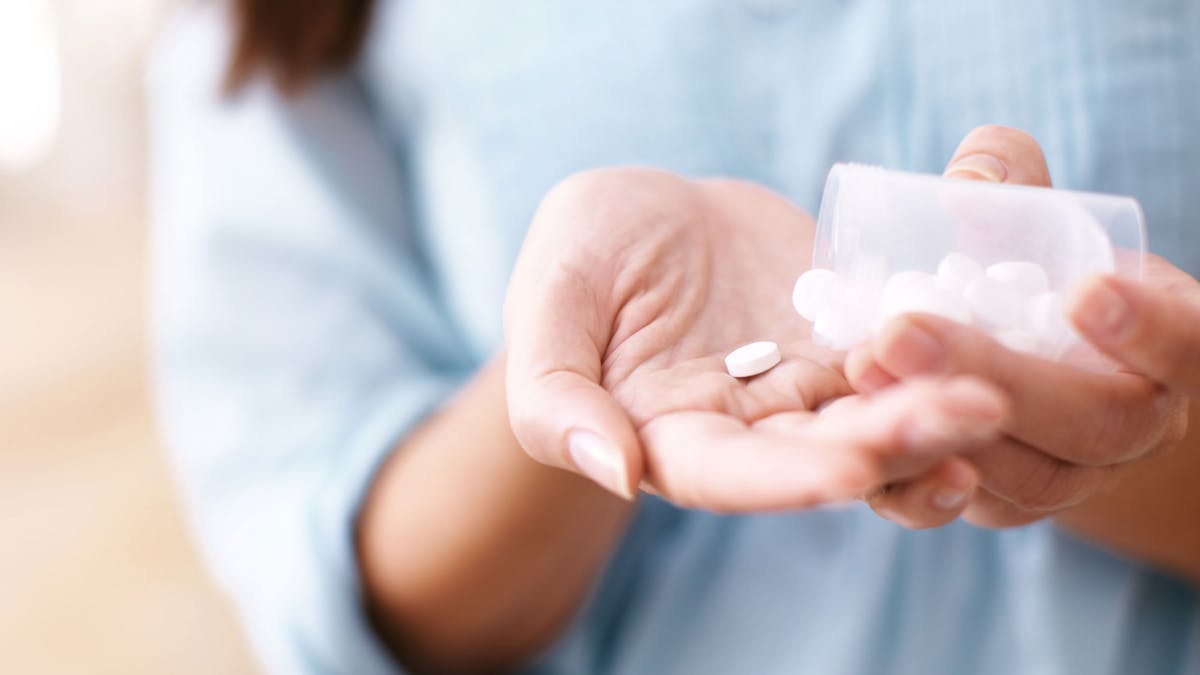
Do you need electrolyte supplementation on a keto diet?
Did you like this article?
We appreciate your helpful feedback!
Did you like this article?
We appreciate your helpful feedback!
8. The keto flu & side effects
Once you’ve been on a keto diet for a few weeks or more, you will likely feel great and have lots of energy. However, the first few days to weeks can be tough, as your body switches from burning mostly glucose to burning mostly fat for fuel.
Keto flu
When your body makes this shift, you may experience what’s commonly known as the “keto flu.” It happens as a result of changes to your body’s balance of fluid and minerals when you begin eating very few carbs.
Symptoms of keto flu include:
- Fatigue
- Headache
- Irritability
- Lack of motivation
- Difficulty focusing (“brain fog”)
- Dizziness
- Muscle cramps
- Less energy for intense exercise
Fortunately, you can minimize these symptoms before they start by replenishing fluids and salt. Good strategies include drinking a cup or two of salty broth or being liberal with the salt shaker.
Also, remember that these symptoms are temporary. As your body adapts to its new way of getting energy — from fat instead of sugar — symptoms should quickly subside.
Summary
When starting a keto diet, there’s a chance you’ll get the “keto flu” as a result of changes to your body’s balance of fluid and minerals once you start cutting out carbs. The good news is, these symptoms are temporary and you can take steps to mitigate them.

The keto flu, other keto side effects, and how to cure them.

Do you need electrolyte supplementation on a keto diet?
9. Keto FAQ
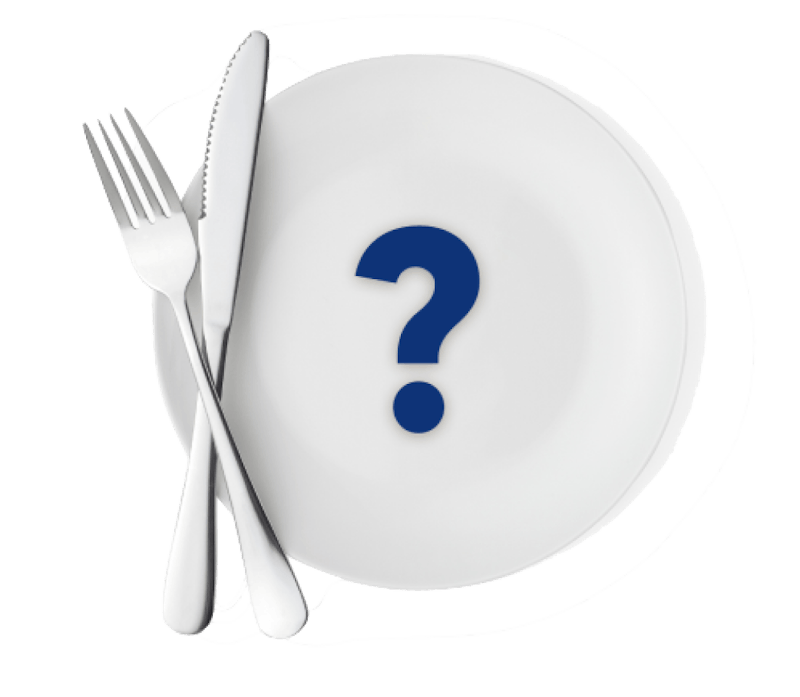
Before getting started, you may have a few — or perhaps even several — questions about keto diets.
Here are a few of the more commonly asked questions about keto:
Is keto safe?
For most people, eating a keto diet is safe. However, as mentioned earlier, if you take medications for diabetes or high blood pressure, you should speak with your doctor about adjusting your medications.
Those who should avoid being in ketosis include breastfeeding women and people with rare metabolic conditions that are typically diagnosed in childhood. 31
For others, being in ketosis is perfectly safe and healthy. However, ketosis is sometimes confused with another condition called ketoacidosis. Although they sound the same, they’re entirely different. 32
Keto diets aren’t harmful to your heart, kidneys, or bones either.
Read more about why keto diets are overwhelmingly safe in our guide, Top 17 keto and low carb controversies.
How much weight can I expect to lose on keto?
Unfortunately, there isn’t a one-size-fits-all answer to this question. 33
Most people lose about 2 to 4 pounds (1 to 2 kilos) during the first week. Some people lose even more.
Keep in mind that a good portion of this is water weight, though. After the first couple of weeks, weight loss often slows down quite a bit. While a lot of people continue losing about 1 pound (0.5 kilo) of weight a week, many others lose more or less than this.
For instance, younger men tend to drop weight quickly and steadily. By contrast, women over 40 often lose weight more gradually and may go for a few weeks without losing any weight at all.
Weight loss typically slows down as you approach your goal weight. If your weight loss hasn’t budged for several weeks or months, check out our Top 10 tips to break a weight loss stall.
And remember that a “normal” body weight varies depending on the individual. This is based on your genes, health history, and other factors you have little control over.
How will I know whether I’m in ketosis?
Sometimes, you’ll have a pretty good idea when you’re in ketosis 34 . Among the most common signs are:
- Dry mouth or a metallic taste in the mouth
- Increased thirst and more frequent urination
- “Keto breath” or “fruity breath,” which may be more apparent to others
- Initial fatigue, followed by an increase in energy
- Decreased appetite and food intake (one of the more welcome side effects!)
If you have one or more of these signs and you’re experiencing good results on your keto diet, you may not need to do any testing.
However, the only objective way to verify that you’re in ketosis is by checking your ketone levels.
What is the difference between keto and low carb?
Keto and low carb diets differ by how many carbs they contain, and sometimes by which foods are included.
At Diet Doctor, we define keto and low carb diets by the following:
Keto: Less than 20 grams of net carbs per day
Moderate low carb: Between 20 and 50 grams of net carbs per day
Liberal low carb: Between 50 and 100 grams of net carbs per day
On a keto diet, carbohydrates are minimized to achieve ketosis. On a low carb diet, ketosis may occur, but it isn’t a goal.
More questions and answers:
10. How to start a keto diet now
Before starting a keto diet, check with your healthcare provider if you take:
- medications for diabetes
- medications for high blood pressure
In general, you should discuss any significant diet or lifestyle changes with your doctor.
If you are breastfeeding, a keto diet may not be right for you at this time. You can still limit unnecessary carbs without eating a strict keto diet. Learn more >
After you’ve gotten the go-ahead from your healthcare provider, just follow the next few steps:

1. Get a fresh start
Improve your chances for success by using this guide to clean out your fridge, freezer, and pantry.

2. Plan ahead
Create a simple plan for the week. Or check out our free keto meal plan.

3. Shop and restock
With your plan in hand, it’s time to grocery shop. Use this shopping list of low carb foods to guide you.
Leaflet
Here’s our leaflet with basic keto advice. Print it out, put it on your fridge — or give it to your curious friends!
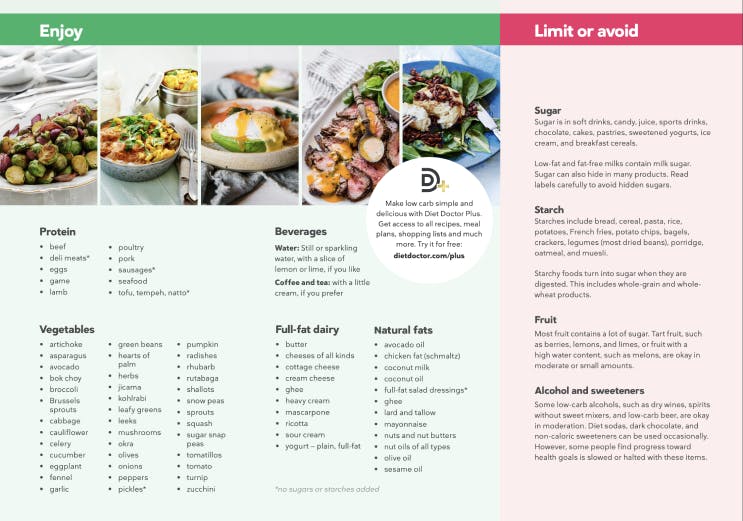
More on getting started
1. Clean out your fridge, freezer, and pantry.
Toss or give away the sugary and starchy foods. You can use our kitchen clean-out list to help you make sure your kitchen is keto-friendly when you start your diet.
If you share a house with someone not joining you on keto, discuss getting rid of the foods that are most likely to tempt you and storing the rest in an out-of-the-way spot.
2. Create a simple plan for the week.
A simple plan for keto meals will help keep you on track. If you are not handy in the kitchen, plan for meals that are easy to put together from basic ingredients. Meals should always include a protein source. Add a vegetable or two, plus butter, olive oil, or cheese, and you’re all set.
Or, if you are comfortable in the kitchen, try our weekly meal plans. They make getting started even easier for you. Check out our free 30-day keto meal plan. You’ll get keto recipes for breakfast, lunch, and dinner for two weeks.
3. With your plan in hand, shop and restock.
Focusing on keto-friendly foods you love, restock your fridge, freezer, and pantry. You can use this shopping list of low carb foods to guide you.
But you don’t need to buy everything at once. Choose foods you currently enjoy. You might add in some items you’ve been avoiding because you’ve been counting calories or restricting fat. You may be happy to know that bacon, cheese, and many kinds of nuts are keto-friendly.
The following steps are optional, but might help you find motivation and support as you get started:
4. Take “before” pictures and measurements.
This gives you a baseline, from which to track your progress. You may be amazed at how quickly things improve.
5. Sign up for our newsletter.
Join DD plus, and become a part of our members-only Facebook group. You’ll get resources to help you stay on track and meet others who are starting their keto journey.
DD+ MEMBERSHIP
Start your FREE 30-day trial!
Get instant access to healthy low carb and keto meal plans, fast and easy recipes, weight loss advice from medical experts, and so much more. A healthier life starts now with your free trial!
A ketogenic diet for beginners - the evidence
This guide is written by Dr. Andreas Eenfeldt, MD, Dr. Bret Scher, MD and was last updated on November 29, 2022. It was medically reviewed by Dr. Michael Tamber, MD on February 15, 2022.
The guide contains scientific references. You can find these in the notes throughout the text, and click the links to read the peer-reviewed scientific papers. When appropriate we include a grading of the strength of the evidence, with a link to our policy on this. Our evidence-based guides are updated at least once per year to reflect and reference the latest science on the topic.
All our evidence-based health guides are written or reviewed by medical doctors who are experts on the topic. To stay unbiased we show no ads, sell no physical products, and take no money from the industry. We're fully funded by the people, via an optional membership. Most information at Diet Doctor is free forever.
Should you find any inaccuracy in this guide, please email andreas@dietdoctor.com.
- Most studies have shown that low carb diets are equivalent to or better than low fat diets for weight loss. These three meta-analyses of randomized trials found that low carb was superior to low fat: Nutrients 2020: Impact of a ketogenic diet on metabolic parameters in patients with obesity or overweight and with or without type 2 diabetes: a meta-analysis of randomized controlled trials[strong evidence]PLoS One 2015: Dietary intervention for overweight and obese adults: Comparison of low carbohydrate and low fat diets. A meta-analysis[strong evidence]Learn moreThe British Journal of Nutrition 2016: Effects of low carbohydrate diets v. low fat diets on body weight and cardiovascular risk factors: a meta-analysis of randomised controlled trials[strong evidence]Learn more↩
- Obesity Reviews 2015: Do ketogenic diets really suppress appetite? A systematic review and meta-analysis[strong evidence]European Journal of Clinical Nutrition 2013: Ketosis and appetite-mediating nutrients and hormones after weight loss
[non-controlled study; weak evidence]Nutrients 2020: Impact of a ketogenic diet on metabolic parameters in patients with obesity or overweight and with or without type 2 diabetes: A meta-analysis of randomized controlled trials[strong evidence]
Diabetes Research and Clinical Practice 2018: Effect of dietary carbohydrate restriction on glycemic control in adults with diabetes: A systematic review and meta-analysis[strong evidence]↩
- Journal of the American College of Nutrition 2013: Improvements in glucose metabolism and insulin sensitivity with a low carbohydrate diet in obese patients with type 2 diabetes[uncontrolled study; weak evidence]JCI Insight 2019: Dietary Carbohydrate Restriction Improves Metabolic Syndrome Independent of Weight Loss[randomized trial; moderate evidence] But the following study reported no difference in weight loss between the low fat and low carb groups, and there was also no difference in weight loss when taking insulin resistance status into account. Therefore, it is still unclear how much lowering insulin contributes to weight loss. Obesity 2015: Weight loss on low fat vs. low carb diets by insulin resistance status among overweight adults & adults with obesity: A randomized pilot trial[moderate evidence]
↩
- Nutrients 2019: Non-energy-restricted low carbohydrate diet combined with exercise intervention improved cardiometabolic health in overweight Chinese females[moderate evidence]Annals of Internal Medicine 2014: Effects of low carbohydrate and low fat diets; a randomized trial[moderate evidence]Annals of Internal Medicine 2005: Effect of a low carbohydrate diet on appetite, blood glucose levels, and insulin resistance in obese patients with type 2 diabetes[non-randomized trial; weak evidence]↩
- Journal of the American College of Nutrition 2013: Improvements in glucose metabolism and insulin sensitivity with a low carbohydrate diet in obese patients with type 2 diabetes[uncontrolled study; weak evidence]JCI Insight 2019: Dietary Carbohydrate Restriction Improves Metabolic Syndrome Independent of Weight Loss[randomized trial; moderate evidence] But the following study reported no difference in weight loss between the low fat and low carb groups, and there was also no difference in weight loss when taking insulin resistance status into account. Therefore, it is still unclear how much lowering insulin contributes to weight loss. Obesity 2015: Weight loss on low fat vs. low carb diets by insulin resistance status among overweight adults & adults with obesity: A randomized pilot trial[moderate evidence]
↩
- Nutrients 2019: Non-energy-restricted low carbohydrate diet combined with exercise intervention improved cardiometabolic health in overweight Chinese females[moderate evidence]Annals of Internal Medicine 2014: Effects of low carbohydrate and low fat diets; a randomized trial[moderate evidence]Annals of Internal Medicine 2005: Effect of a low carbohydrate diet on appetite, blood glucose levels, and insulin resistance in obese patients with type 2 diabetes[non-randomized trial; weak evidence]↩
- Although low-sugar berries — such as blackberries, raspberries, and strawberries — are ok in small to moderate amounts. ↩
- Current Diabetes Reports 2021: Efficacy of ketogenic diets on type 2 diabetes: a systematic review[strong evidence]Nutrients 2020: Impact of a ketogenic diet on metabolic parameters in patients with obesity or overweight and with or without type 2 diabetes: a meta-analysis of randomized controlled trials[strong evidence]The British Journal of Nutrition 2013: Very-low-carbohydrate ketogenic diet v. low fat diet for long-term weight loss: a meta-analysis of randomised controlled trials[strong evidence]Diabetes Research and Clinical Practice 2018: Effect of dietary carbohydrate restriction on glycemic control in adults with diabetes: A systematic review and meta-analysis[strong evidence]↩
- Several meta-analyses of randomized controlled trials (RCTs), considered the highest level of scientific evidence, conclude that low carb diets can be more effective than low fat diets for losing weight: Nutrients 2020: The effect of low fat and low carbohydrate diets on weight loss and lipid levels: a systematic review and meta-analysis[strong evidence]The British Journal of Nutrition 2013: Very-low-carbohydrate ketogenic diet v. low fat diet for long-term weight loss: a meta-analysis of randomised controlled trials[strong evidence]PLoS One 2015: Dietary intervention for overweight and obese adults: Comparison of low carbohydrate and low fat diets. A meta-analysis[strong evidence]Learn moreThe British Journal of Nutrition 2016: Effects of low carbohydrate diets v. low fat diets on body weight and cardiovascular risk factors: a meta-analysis of randomised controlled trials[strong evidence]Learn more↩
- Journal of Medical Internet Research 2017: An online intervention comparing a very low carbohydrate ketogenic diet and lifestyle recommendations versus a plate method diet in overweight individuals with type 2 diabetes: a randomized controlled trial[randomized trial; moderate evidence]Diabetes & Metabolic Syndrome 2017: Induced and controlled dietary ketosis as a regulator of obesity and metabolic syndrome pathologies[randomized trial; moderate evidence]Nutrients 2020: The effects of a low calorie ketogenic diet on glycaemic control variables in hyperinsulinemic overweight/obese females[non-controlled study; weak evidence]↩
- For example, in a small study, 10 overweight adults who followed a non-calorie-restricted, very low carb diet ended up reducing their usual intake by 1,000 calories, on average — even though they were allowed to eat all the fat and protein they wanted: Annals of Internal Medicine 2005: Effect of a low carbohydrate diet on appetite, blood glucose levels, and insulin resistance in obese patients with type 2 diabetes[non-randomized trial; weak evidence]Obesity Reviews 2015: Do ketogenic diets really suppress appetite? A systematic review and meta-analysis[strong evidence]↩
- This finding has been referred to as the “metabolic advantage” of low carb. In two studies, people who had previously lost weight were found to burn between 200 to nearly 500 more calories per day on a low carb maintenance diet compared to a higher carb maintenance diet: Journal of the American Medical Association 2012: Effects of dietary composition during weight loss maintenance: a controlled feeding study[randomized trial; moderate evidence]British Medical Journal 2018: Effects of a low carbohydrate diet on energy expenditure during weight loss maintenance: randomized trial[randomized trial; moderate evidence]↩
- This is mainly based on the consistent experience of low carb clinicians, and stories from people trying different levels of carb restriction [weak evidence]. Additionally, one meta-analysis of RCTs found that very low carb diets limited to 50 grams of carbohydrates per day resulted in greater fat loss than low carb diets that provided about 40% of calories from carbs: Obesity Reviews 2016: Impact of low‐carbohydrate diet on body composition: meta‐analysis of randomized controlled studies[strong evidence for fat mass loss on very low carb diets in particular]↩
- Some disagree with the use of the word “reverse” when it comes to type 2 diabetes. The concern is that it implies the disease is completely gone, never to return. At Diet Doctor, we use the term “reverse” to indicate that blood sugar levels are no longer in the diabetic range without the use of medications. However, we acknowledge that high glucose levels will likely recur if a patient goes back to their prior high carb eating habits. Therefore, “reverse” does not imply a forever cure. ↩
- Meta-analyses of RCTs have shown that low carb diets consistently outperform other diets for blood sugar control: International Journal of Endocrinology 2021: Comparing the efficacy and safety of low carbohydrate diets with low fat diets for type 2 diabetes mellitus patients: a systematic review and meta-analysis of randomized clinical trials[strong evidence]Diabetes Research and Clinical Practice 2018: Effect of dietary carbohydrate restriction on glycemic control in adults with diabetes: A systematic review and meta-analysis[strong evidence]The American Journal of Clinical Nutrition 2018: Effects of low carbohydrate- compared with low fat diet interventions on metabolic control in people with type 2 diabetes: a systematic review including GRADE assessments[strong evidence]BMJ Open Diabetes Research and Care 2017: Systematic review and meta-analysis of dietary carbohydrate restriction in patients with type 2 diabetes[strong evidence]Diabetes, Obesity & Metabolism 2019: An evidence‐based approach to developing low‐carbohydrate diets for type 2 diabetes management: a systematic review of interventions and methods[strong evidence]↩
- Diabetes Care 2004: Dietary carbohydrate (amount and type) in the prevention and management of diabetes[overview article; ungraded]↩
- In a 2019 position statement, the American Diabetes Association stated: “Reducing overall carbohydrate intake for individuals with diabetes has demonstrated the most evidence for improving glycemia and may be applied in a variety of eating patterns that meet individual needs and preferences:” Diabetes Care 2019: Nutrition therapy for adults with diabetes or prediabetes: a consensus report[report; ungraded]↩
- This has been demonstrated in several clinical trials: Cureus 2020: Effects of the ketogenic diet on glycemic control in diabetic patients: Meta-analysis of clinical trials[strong evidence]European Journal of Clinical Nutrition 2017: The interpretation and effect of a low carbohydrate diet in the management of type 2 diabetes: a systematic review and meta-analysis of randomised controlled trials[strong evidence]Nutrition and Metabolism 2008: The effect of a low carbohydrate, ketogenic diet versus a low-glycemic index diet on glycemic control in type 2 diabetes mellitus[randomized trial; moderate evidence]Frontiers in Endocrinology 2019: Long-term effects of a novel continuous remote care intervention including nutritional ketosis for the management of type 2 diabetes: A 2-year non-randomized clinical trial[non-randomized study; weak evidence]↩
- In reviews of RCTs of low carb and low fat diets, metabolic health markers improved the most in those who ate very low carbohydrate or ketogenic diets: Nutrients 2020: The effect of low fat and low carbohydrate diets on weight loss and lipid levels: a systematic review and meta-analysis[strong evidence]Nutrients 2020: Impact of a ketogenic diet on metabolic parameters in patients with obesity or overweight and with or without type 2 diabetes: a meta-analysis of randomized controlled trials[strong evidence]Nutrition Reviews 2019: Effects of carbohydrate-restricted diets on low-density lipoprotein cholesterol levels in overweight and obese adults: a systematic review and meta-analysis[strong evidence]British Journal of Nutrition 2013: Very low carbohydrate ketogenic diet v. low fat diet for long-term weight loss: a meta-analysis of randomised controlled trials[strong evidence]↩
- The metabolic syndrome consists of hypertension, abdominal obesity, low HDL (below 40 mg/dl in men or 50 mg/dl in women), triglycerides above 150 mg/dL, and elevated fasting glucose. ↩
- In one trial, all 22 participants had such impressive results after eating a ketogenic diet for 12 weeks that they no longer met the criteria for metabolic syndrome: Journal of Medicinal Food 2011: A pilot study of the Spanish Ketogenic Mediterranean Diet: an effective therapy for the metabolic syndrome[non-randomized trial; weak evidence]Lipids 2009: Carbohydrate restriction has a more favorable impact on the metabolic syndrome than a low fat diet[randomized trial; moderate evidence]Experimental & Clinical Cardiology 2004: Long-term effects of a ketogenic diet in obese patients[non-randomized trial; weak evidence]↩
- There is still a shortage of high-quality studies, but what exists is promising, sometimes showing remarkable improvements. Diabetes, Obesity and Metabolism 2019: Low versus high carbohydrate diet in type 1 diabetes: A 12-week randomized open-label crossover study[randomized trial; moderate evidence]PLOS ONE 2018: Low-carbohydrate diets for type 1 diabetes mellitus: A systematic review[weak evidence, downgraded due to lack of high-quality studies]Pediatrics 2018: Management of type 1 diabetes with a very low–carbohydrate diet[online survey, very weak evidence for an exceptionally strong positive effect]Asia Pacific Journal of Clinical Nutrition 2016: A randomised trial of the feasibility of a low carbohydrate diet vs standard carbohydrate counting in adults with type 1 diabetes taking body weight into account[moderate evidence for a positive effect, though a very small study]Stories of people trying low carb for type 1 diabetes
↩
- Medicine 2016: Nonalcoholic fatty liver disease is associated with excessive calorie intake rather than a distinctive dietary pattern[case-control study; very weak evidence]Journal of Investigative Medicine 2017: Influence of dietary macronutrients on liver fat accumulation and metabolism[overview article; ungraded]↩
- The American Journal of Clinical Nutrition 2012: Effect of short-term carbohydrate overfeeding and long-term weight loss on liver fat in overweight humans[non-controlled study; weak evidence]The American Journal of Clinical Nutrition 2012: Sucrose-sweetened beverages increase fat storage in the liver, muscle, and visceral fat depot: A 6-mo randomized intervention study[randomized trial; moderate evidence]↩
- Nutrients 2017: Nonalcoholic fatty liver disease and insulin resistance: New insights and potential new treatments[overview article; ungraded]↩
- Journal of Hepatology Reports 2021: Treatment of NAFLD with intermittent calorie restriction or low carb high fat diet – a randomized controlled trial[moderate evidence]Frontiers in Endocrinology 2020: Efficacy of a 2-month very low calorie ketogenic diet (VLCKD) compared to a standard low calorie diet in reducing visceral and liver fat accumulation in patients with obesity[randomized controlled trial; moderate evidence]Asia Pacific Journal of Clinical Nutrition 2020: Impact of a low carbohydrate and high fiber diet on nonalcoholic fatty liver disease[randomized controlled trial; moderate evidence]Hepatology Research 2018: Comparison of efficacy of low carbohydrate and low fat diet education programs in non-alcoholic fatty liver disease: A randomized controlled study[randomized trial; moderate evidence]Proceedings of the National Academy of Sciences of the United States of America 2020: Effect of a ketogenic diet on hepatic steatosis and hepatic mitochondrial metabolism in nonalcoholic fatty liver disease[non-controlled study; weak evidence]↩
- The Journal of Nutrition 2020: The ketogenic diet: evidence for optimism but high-quality research needed[overview article; ungraded]↩
- JAMA Internal Medicine 2019: The ketogenic diet for obesity and diabetes: enthusiasm outpaces evidence[overview article; ungraded]↩
- Current Developments in Nutrition 2021 Elevated LDL-Cholesterol with a Carbohydrate-Restricted Diet: Evidence for a Lean Mass Hyper-Responder Phenotype[observational study with self-reported data, very weak evidence]British Journal of Nutrition 2016: Effects of low carbohydrate diets v. low fat diets on body weight and cardiovascular risk factors: a meta-analysis of randomised controlled trials[strong evidence]Cardiovascular Diabetology 2018: Cardiovascular disease risk factor responses to a type 2 diabetes care model including nutritional ketosis induced by sustained carbohydrate restriction at 1 year: an open label, non-randomized, controlled study.[non-randomized trial; weak evidence]Sports (Basel) 2018: The three-month effects of a ketogenic diet on body composition, blood parameters, and performance metrics in CrossFit trainees: a pilot study[non-randomized trial; weak evidence]British Journal of Nutrition 2016: Effects of low carbohydrate diets v. low fat diets on body weight and cardiovascular risk factors: a meta-analysis of randomised controlled trials[strong evidence]↩
- Diabetes 2004: Effect of a high protein, low carbohydrate diet on blood glucose control in people with type 2 diabetes[randomized trial; moderate evidence]American Jopurnal of Clinical Nutrition 2003: An increase in dietary protein improves the blood glucose response in persons with type 2 diabetes[randomized trial; moderate evidence]↩
- These include enzyme deficiencies, which interfere with the body’s ability to make and use ketones or to properly digest fats: Department of Neurology 2012: Chapter 45 – Ketogenic diet[textbook chapter; ungraded]↩
- Nutrition Bulletin 2011: Ketosis, ketoacidosis and very-low-calorie diets: Putting the record straight[overview article; ungraded]↩
- This answer is based on clinical experience of low carb practitioners and was unanimously agreed upon by our low carb expert panel. You can learn more about our panel here[weak evidence]. ↩
- Nutritional ketosis is defined as having a beta-hydroxybutyrate level of 0.5 to 3.0 mmol/L in the blood. Learn more: What is optimal ketosis?↩













































































